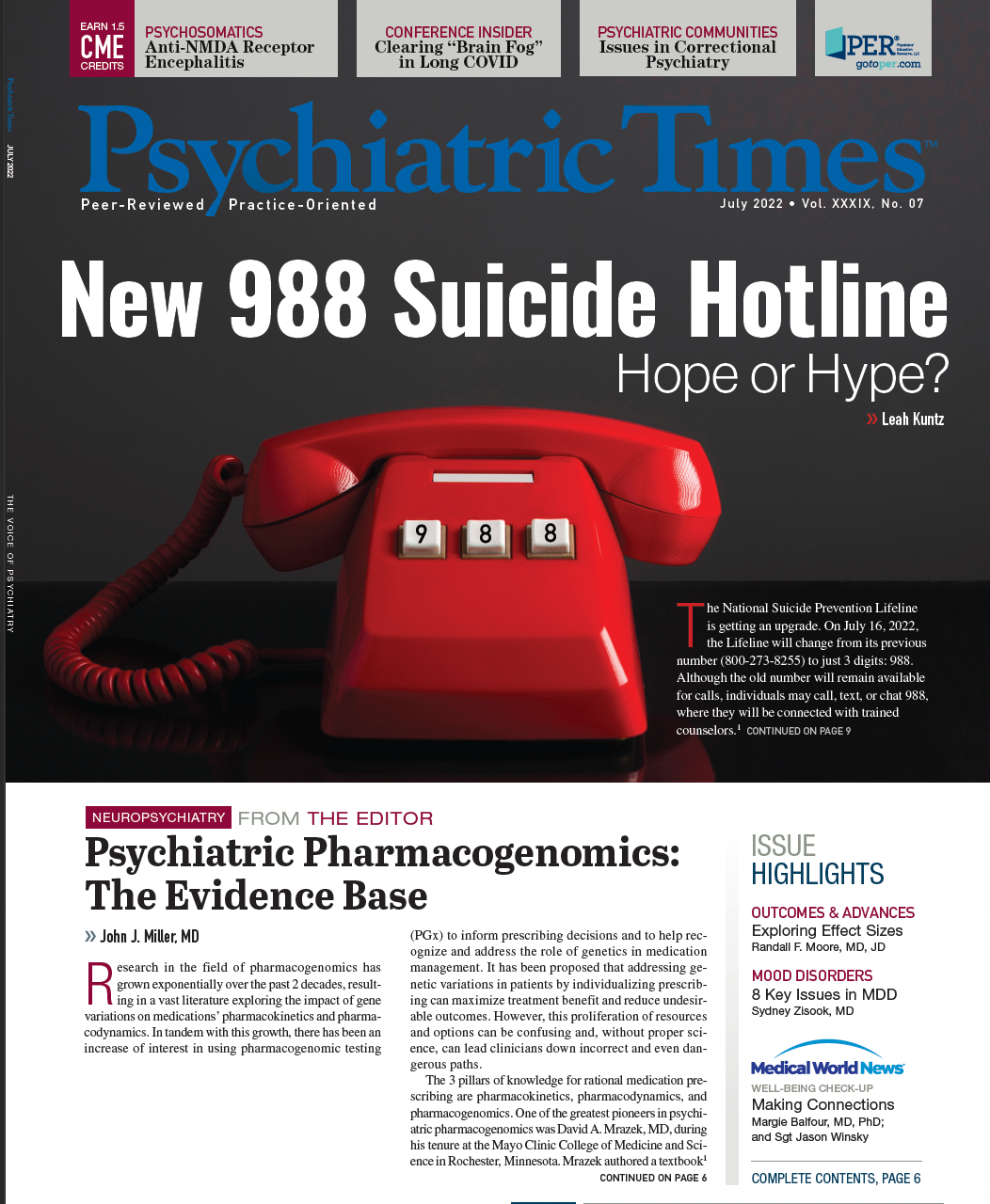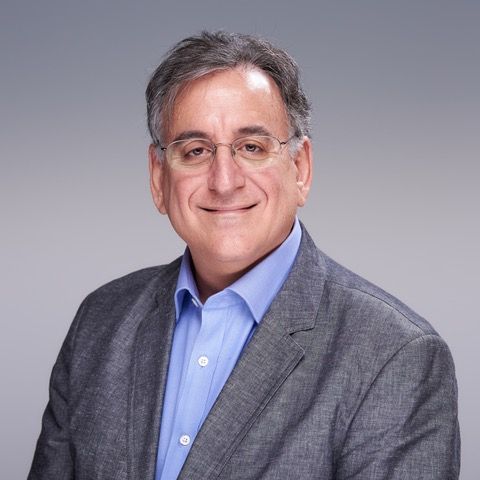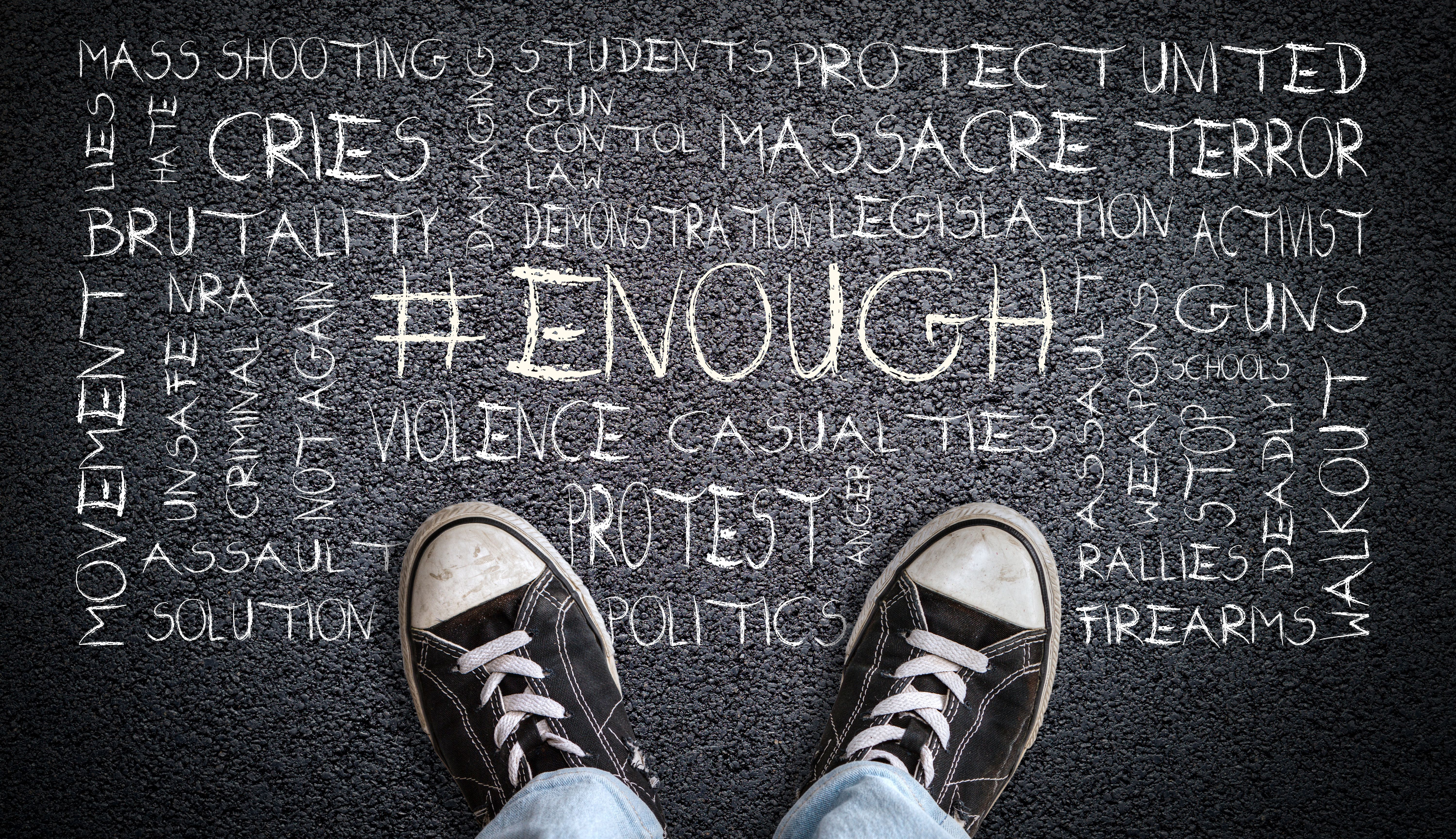Publication
Article
Psychiatric Times
Behind Bars: An Insider’s Perspective on Correctional Psychiatry
Author(s):
"The fact is that these patients have a huge capacity to improve their lives, far more than the average person. The work done with them in a clinical setting echoes throughout their families and communities and can be some of the most rewarding work for clinicians."
Miguel Aguirre_AdobeStock
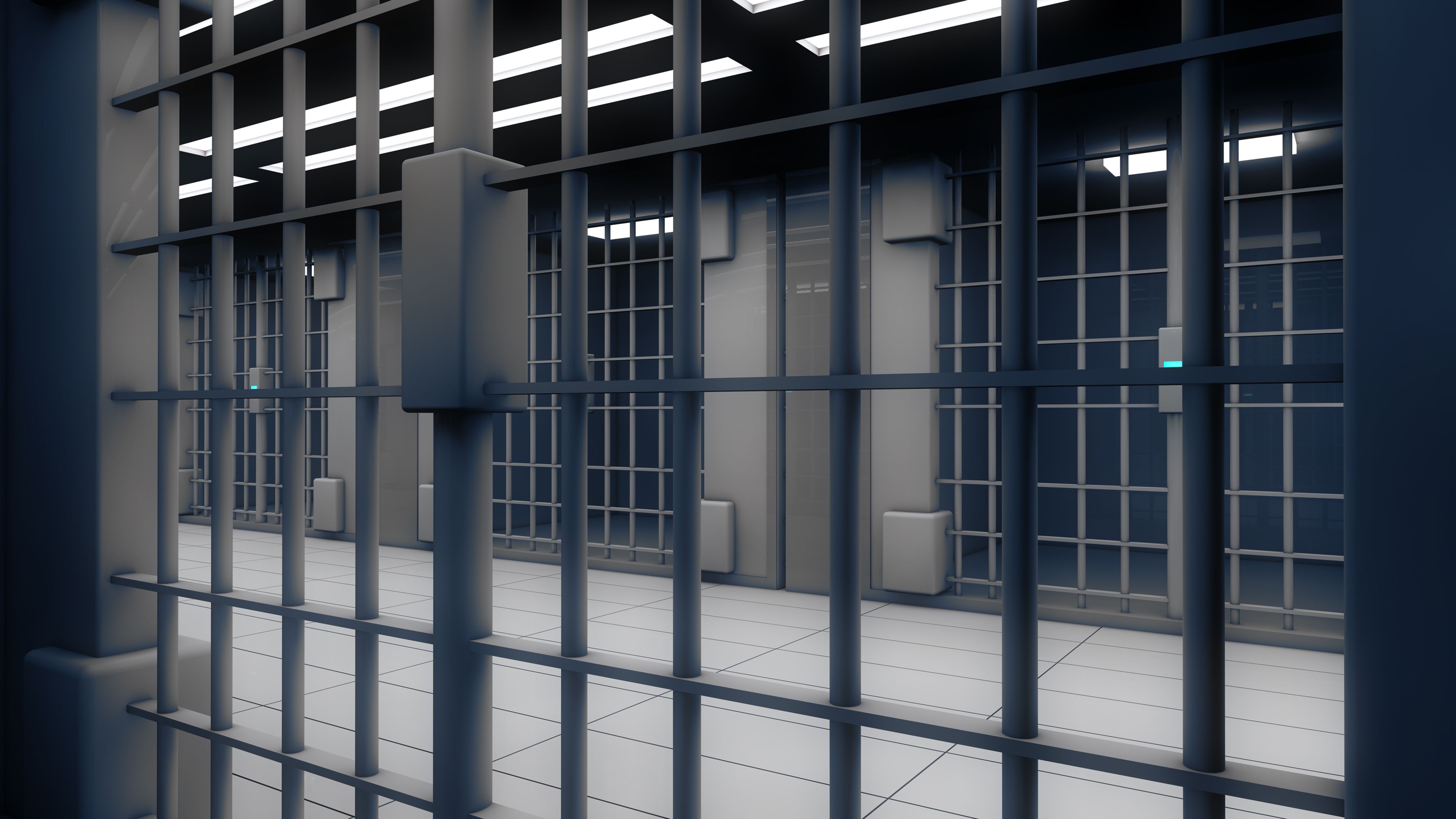
CLINICAL CONVERSATIONS
Approximately 2 million people are in prisons and jails in the United States, and it has been estimated that about one-third (or more) receive mental health care while within the system. Although movies and the media like to portray a dismal and scary situation, the truth about correctional psychiatry is far from that. In fact, care in these facilities can rival the best care in other institutions, and the field may present unique career opportunities while addressing issues that often lead to burnout.
So what is it like to practice psychiatry behind bars? Psychiatric TimesTM invited Amar Mehta, MD, deputy director of the statewide mental health program at the California Department of Corrections and Rehabilitation, to share insight and experiences.
Psychiatric TimesTM: According to some estimates, as many as 37% and 44% of individuals in state and federal prisons and jails, respectively, have received a mental health disorder diagnosis. Based on your experience, are these numbers accurate? What are the most common diagnoses in your facilities?
Amar Mehta, MD: California, the state with the highest population, now has about 100,000 inmates in the state prison system. That’s the second highest number behind Texas and roughly equivalent to the lowest 22 states combined. Almost exactly one-third of the inmates, 33% (31,873 of 96,270), are currently receiving regular, ongoing mental health treatment. That is just a single slice in time, of course, as there are always patients cycling through the system. We try to be as accessible as possible to anyone who wants to tackle these often long-standing issues while incarcerated.
According to some studies, about 65% of prison inmates have a substance use disorder, with another 20% were under the influence of drugs or alcohol at the time of their crime. We know there is a large nexus between substance use disorders and other mental illnesses, especially trauma, and we work hard to identify and treat as many as we can while we have the shared opportunity with these patients.
There also is a high prevalence of mood and anxiety disorders, sometimes related to their situation but very often predating their incarceration and without being recognized.
There are also…psychotic disorders, although we make every effort to treat people with primary, pervasive, and chronic psychotic disorders who are nonviolent in hospital settings over prison settings. There are also personality disorders, of course, with a wide range of estimates.
PT: How often do individuals arrive with a diagnosis versus receive a diagnosis after incarceration?
Mehta: All inmates are initially transferred through one of our reception centers for classification and assignment, and they are all screened for mental illness in that process. About 23% to 33% screen into mental health care from that initial step, and that roughly correlates with our total prevalence of psychiatric disorders in the whole prison population (33%). Although a substantial proportion of these individuals had mental health involvement prior to their arrival, for many patients this is their first opportunity to address those issues with the attention they deserve.
PT: Does mental health stigma continue into the correctional psychiatry system? What role does psychoeducation play in this setting?
Mehta: Although stigma has decreased throughout American society in the last couple of decades, there are still misconceptions and biases about mental illness and it still may be perceived as a weakness rather than an illness.
Many groups in prison culture don’t allow their peers to receive these services, no matter how much they may be suffering. Mental health staff have worked to be nonjudgmental, nonthreatening, and approachable while providing services like skills-based groups for people that do not officially belong to the mental health program.
Psychoeducation is a key part of all mental health treatment, but perhaps more than ever in this cohort. Many of our patients have not previously encountered accurate information about mental illness, and this socioeconomic group is chronically underserved in many areas of health care, especially mental health. Thus, psychoeducation is an important part of both treatment and educating the general prison population to recognize signs and symptoms that could benefit from help.
PT: What issues are involved in discharge planning?
Mehta: Every institution has a prerelease coordinator, and there are many factors that must be considered (eg, medical illnesses, substance abuse treatment, other mental health disorders, etc).
Arranging services in every county for all of these can be daunting for a trained professional, let alone an inmate-patient. Thus there are many groups that participate in this process in California, such as the Council on Criminal Justice and Behavioral Health, Department of Health Care Services CalAIM [California Advancing and Innovating Medi-Cal] Justice-Involved Advisory Workgroup, and California Behavioral Health Planning Council. All work in conjunction with community agencies, although resources are always woefully inadequate to meet all the needs of these patients.
PT: What are the top treatment challenges in correctional psychiatry today, and how do they differ from those in mainstream psychiatry?
Mehta: Health care staffing is a nationwide—and indeed, worldwide—issue. Severe shortages throughout the country make hiring an extremely competitive environment, with special challenges in overcoming the stigma of prison work.
The fact is that these patients have a huge capacity to improve their lives, far more than the average person. The work that is done with them in a clinical setting echoes throughout their families and communities and can be some of the most rewarding work for clinicians. Although some illnesses are deeply rooted and slow to change, this is the perfect place for our patients to work on these issues and their mental health.
In addition, limits imposed on correctional psychiatry by conventions and inertia can make it harder to remain nimble and keep up with the most advanced treatment modalities, including telepsychiatry and emerging psychopharmacological and technological breakthroughs.
PT: It sounds as though these challenges can be overwhelming. How do you address them?
Mehta: Quite simply: Through focused, targeted battles. We have made huge strides in establishing the largest correctional telepsychiatry program in the country, and we work hard every day to ensure that our well-trained physicians can practice psychiatry to the fullness of their abilities.
PT: Some of the complaints and struggles from psychiatric clinicians revolve around coverage of care, including psychopharmacology. Are these experiences similar in correctional care settings?
Mehta: One of the best things about working in prison is the focus of attention we are able to bring to the treatment of relevant symptoms. Because our patients have fully state-sponsored health care, our physicians do not have to seek authorization from insurance companies. Laboratory testing is at the discretion of the provider, including [obtaining] blood levels for a very wide variety of medications.
Due to the volume of patients in our system, there are collective bargaining agreements for certain medications. However, the formulary is robust. In addition, nonformulary medications do not require a specific external approval process, and their use is largely left up to the provider to determine clinical appropriateness.
Some specific medications are restricted, such as benzodiazepines primarily prescribed for catatonia, but this can also be seen as a benefit because of the challenges faced by providers in the community.
PT: In some ways, correctional settings may have advantages compared with practicing in the general community. What are other benefits of working in a correctional setting? What attracted you to the field and practice setting?
Mehta: One big advantage is that no patient in our system is ever completely lost to follow-up. They have the right to refuse treatment, but as long as they participate, they are in a constantly monitored setting with good communication about their level of functioning. Similarly, if laboratory testing is required, it will happen promptly or you will be informed of any refusal promptly. This allows for rapid decisions on titrations and next steps. Relationships with the patient are not complicated by disability evaluations, barriers from insurance coverage, or friction from many common controlled substances.
Incarcerated individuals are disproportionately representative of severely underserved populations, and these settings also house the highest concentration of severely mentally ill patients in the United States. Prisons constitute a tightly controlled environment that drastically reduces the variables that can drive a community provider crazy, which I definitely like. I am part of a huge team of like-minded colleagues that work together toward the same goals, and we have stable and equal compensation, good benefits, and a very accommodating work-life balance.
PT: What are some myths about correctional psychiatry that you would like to dispel?
Mehta: There are a few myths in correctional psychiatry that need to be addressed.
1. “People in prisons are bad people, and they deserve bad things happening to them. Criminals don’t matter as long as they’re locked up, and we can just forget about them.”
At least 95% of all inmates in the United States will be released back into the community. And we incarcerate a lot of people. So whatever happens to them while they are in custody or a correctional setting, they will take that experience back out into the general public.
We need to be setting up these individuals with the best chance to succeed after their release. Currently, the United States has depressingly high rates of re-offending and that is a failure on all of our parts as a society. These individuals can succeed if given the right resources; we could have less crimes committed and less people in prisons. Mental health treatment is a great first step toward making that kind of change a reality.
2. “It’s too dangerous to work in a prison.”
I have worked in emergency departments, inpatient hospitals, outpatient clinics, jails, and prisons in multiple states. Patients in prisons tend to be much more stable than their counterparts in jails because they have been sentenced and have been in custody for some time.
This comparison extends to emergency departments as well, to a degree; some inmates will, of course, require treatment at the level of an emergency department at some point, but long periods of decompensation without recognition are rarer with so many eyes on the patient at all times.
Inpatient hospitals may have patients with mental illness who are violent, and these situations generally are handled by health care staff, possibly augmented by security guards. Alternatively, they can transfer the patient. Prisons have trained custody officers throughout the facility who monitor the environment at all times and respond immediately to emergencies to protect staff and other inmates. Plus, outpatient clinics have a huge volume of patients pass through at any given time, while prisons represent a relatively stable population for defined periods of time.
3. “Only bad doctors go to work in prisons.”
As prison salaries have become more competitive due to the need for quality health care, highly qualified physicians have increasingly turned to correctional health care settings for their careers. Dedicated and caring providers with a sense of social justice and the desire to help those that need it the most have found long-term, stable jobs at our prisons. Many clinicians are double or triple board certified, and they are committed to the impact they can make by serving this population.
PT: Thank you for sharing your insights. Is there anything else you want to share with readers?
Mehta: Being a psychiatrist for patients in prison is a great way to challenge yourself and achieve the job satisfaction that can only come from knowing your work is critically important. You can elevate your practice of medicine to the highest levels with patients that appreciate your time and effort and stand to benefit a huge amount from your help.
Amar Mehta, MD
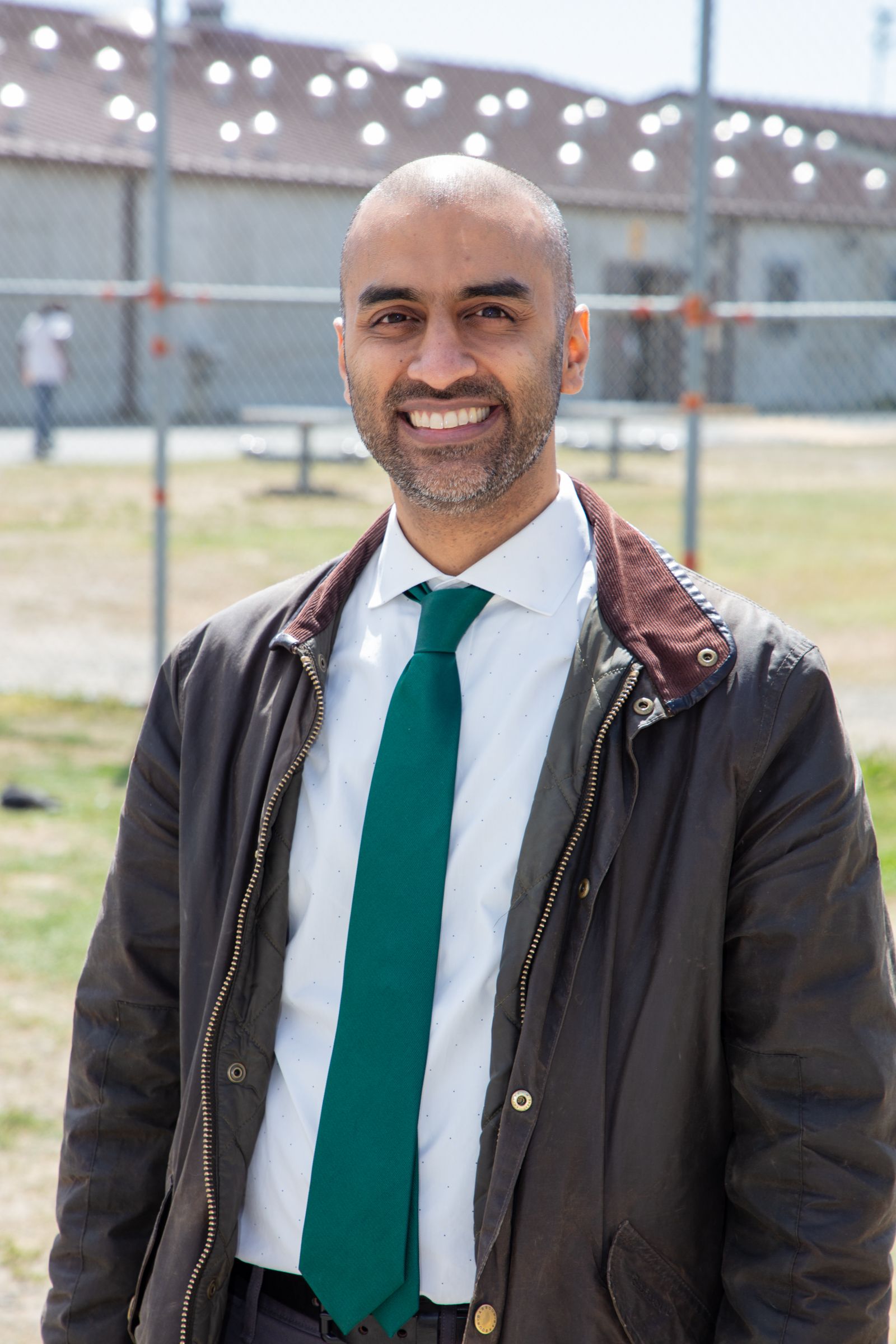
Dr Mehta is deputy director of the Statewide Mental Health Program at the California Department of Corrections and Rehabilitation in Sacramento. Previously, he was the statewide chief of telepsychiatry and directly treated patients in the correctional system for more than 6 years. Dr Mehta is a board-certified physician in adult, child and adolescent, and forensic psychiatry, as well as addiction medicine.
Do you have experiences in correctional psychiatry or other unique areas in psychiatry you would like to share? We’d like to hear about them! Send proposals to PTEditor@mmhgroup.com. ❒
